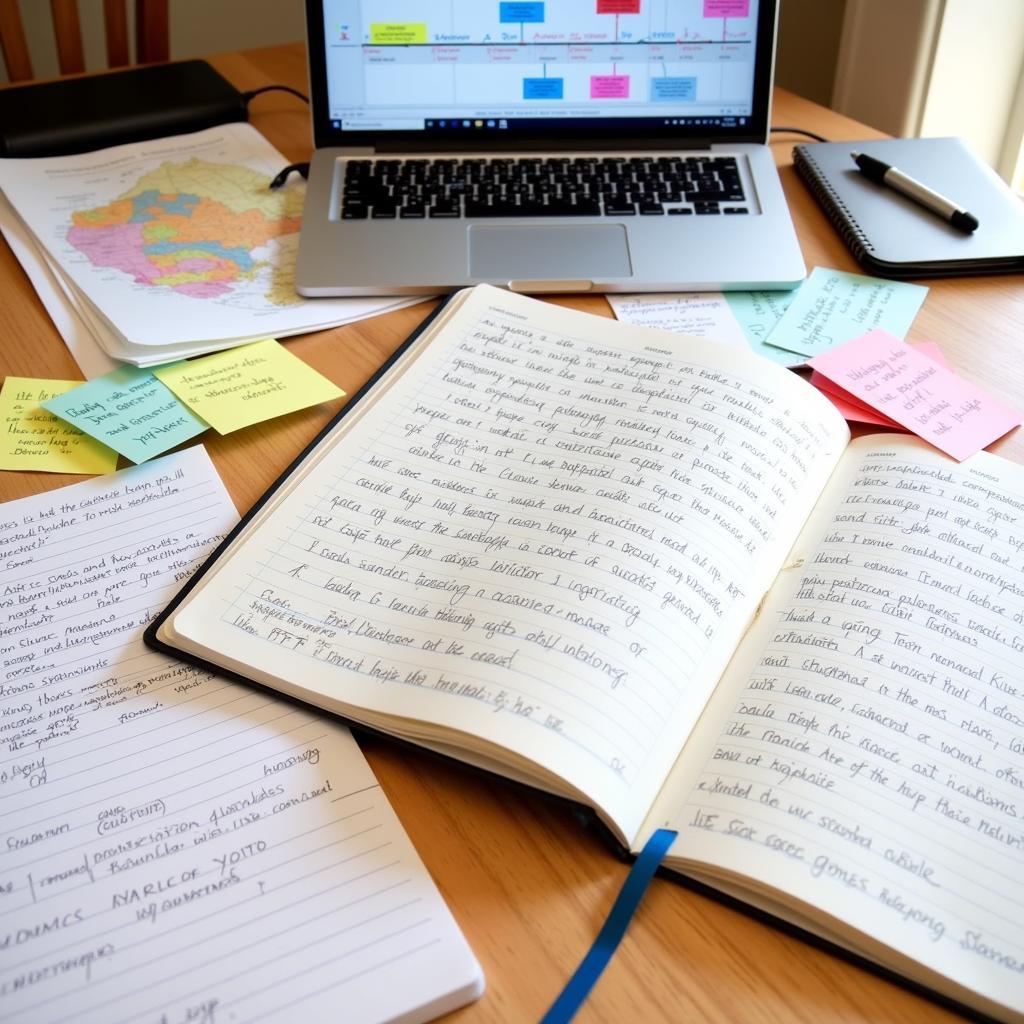History research is more than just memorizing dates and names. It’s a journey of discovery that unveils the intricate tapestry of the past, offering valuable insights into the present and future. Whether you’re a student, a hobbyist, or simply curious about the past, understanding How To Do History Research effectively is crucial for uncovering accurate and compelling narratives. This guide will equip you with the essential tools and techniques to delve into the annals of history like a seasoned researcher.
Unearthing the Past: Key Steps in History Research
Embarking on historical research can feel overwhelming, but a systematic approach can simplify the process. Here’s a step-by-step guide to help you navigate the fascinating world of historical inquiry:
1. Define Your Research Question
Just like any investigative journey, historical research requires a clear destination. Formulating a specific, well-defined research question is paramount. Instead of broadly exploring “World War II,” consider narrowing it down to “The impact of propaganda on American public opinion during World War II.” A focused question provides direction and prevents your research from becoming too broad or unmanageable.
2. Gather Your Resources: Where History Whispers its Secrets
Historical information resides in a multitude of sources, each offering unique perspectives and insights.
-
Primary Sources: These are firsthand accounts created during the historical period being studied. Letters, diaries, photographs, government documents, and artifacts are prime examples.
-
Secondary Sources: These materials are interpretations and analyses of primary sources, often written by historians and researchers. Books, journal articles, and documentaries fall under this category.
Libraries, archives, online databases, and even museums are treasure troves of historical sources. Don’t hesitate to consult librarians and archivists—they are invaluable guides in your quest for historical knowledge.
3. Evaluate Your Sources: Separating Fact from Fiction
Not all historical sources are created equal. Critical evaluation is vital to ensure the accuracy and reliability of the information you gather. When assessing sources, consider the following:
-
Author’s Perspective: Who created the source and what might their biases have been?
-
Purpose of the Source: Was it intended to inform, persuade, or entertain? Understanding the creator’s intent helps contextualize the information.
-
Corroboration: Do other sources support or contradict the information presented? Cross-referencing information helps establish credibility.
4. Organize Your Findings: Constructing a Coherent Narrative
As you gather information, maintain a system for organizing your notes, citations, and key takeaways. Consider using note-taking methods like index cards or digital tools for easy retrieval and analysis. Creating timelines, concept maps, or outlines can help you visualize connections and patterns within the historical data.
 Organizing Information for Historical Research: Note-Taking and Timelines
Organizing Information for Historical Research: Note-Taking and Timelines
5. Analyze and Interpret Your Findings: Piecing Together the Puzzle
Once you’ve gathered and organized your research, it’s time to analyze the information and draw meaningful conclusions.
-
Identify Patterns and Trends: Look for recurring themes, contradictions, or changes over time.
-
Consider Multiple Perspectives: History is rarely black and white. Exploring diverse viewpoints provides a more nuanced understanding.
-
Connect the Dots: How do your findings relate to your research question and the broader historical context?
6. Communicate Your Research: Sharing Your Historical Discoveries
The final step in history research is sharing your findings with others. This could involve writing a research paper, giving a presentation, or creating a blog post. Clearly and effectively communicating your research ensures that your historical insights reach a wider audience.
Essential Tips for Effective History Research
-
Be Patient and Persistent: Historical research takes time. Don’t be discouraged if you encounter roadblocks along the way.
-
Stay Curious: Approach your research with an open mind and a willingness to explore unexpected avenues.
-
Embrace the Detective Work: History research is like solving a puzzle. Enjoy the process of piecing together clues to reveal a clearer picture of the past.
Conclusion: Your Journey into the Past Awaits
Learning how to do history research is an empowering skill that allows you to connect with the past, understand the present, and even gain insights into the future. By following these steps and embracing the spirit of inquiry, you can unlock the secrets of history and contribute to the ongoing dialogue between the past and the present.
If you need help with your historical research or have any questions, our team of expert researchers is here to assist you 24/7. Contact us at 0904826292, email research@gmail.com, or visit our office at No. 31, Alley 142/7, P. Phú Viên, Bồ Đề, Long Biên, Hà Nội, Việt Nam.